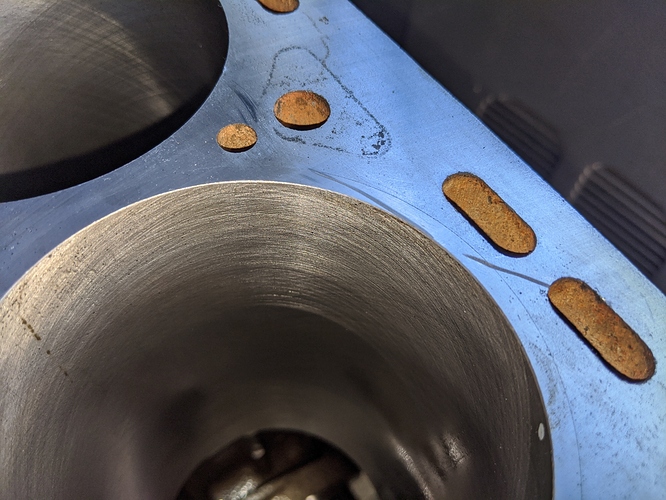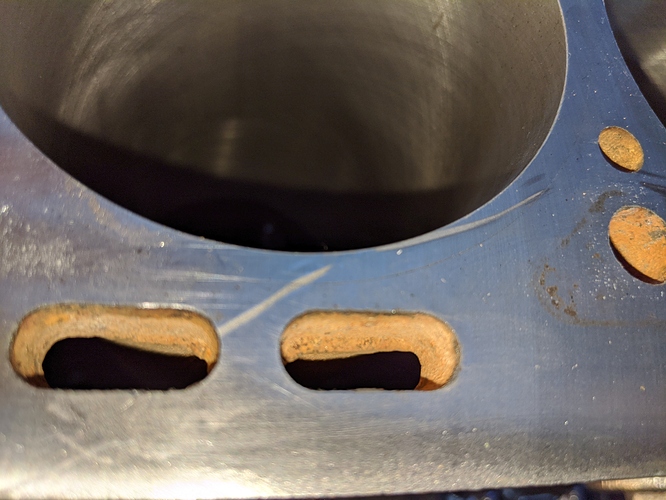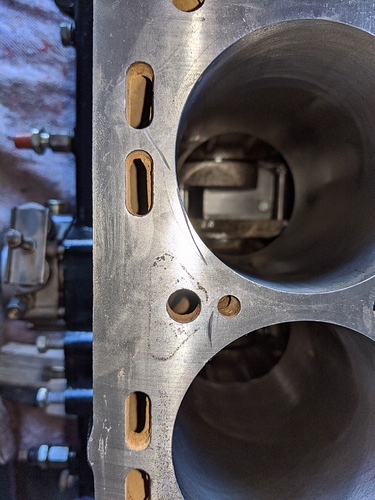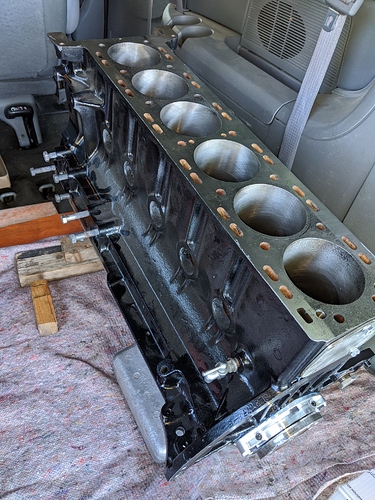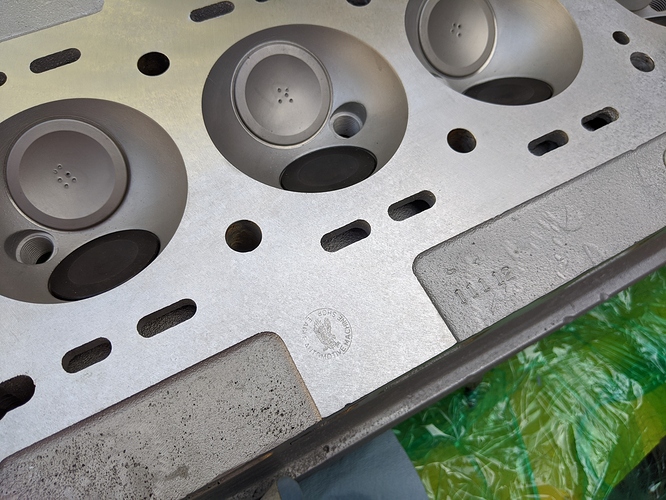I am feeling down.
The engine block is just out of being decked neatly and during transport/setting up on the engine stand, the top surface got ever so slightly scratched (sorry no photo, I was so disgusted).
Is there any scenario where a scratch on the engine block surface does NOT require a (another) milling down?
I read that copper spray can be used on the c/head gasket for super tiny scratches.
My neighbor wants me to go the “gentle flat hammer + file + JB weld route”…
I think I know the answer to my question but…
Thank you folks.
EF
Post a photo please, the gasket will take up some deviation.
As Robin states: we need a photo.
Chances are a few passes with a machinist’s file will take care of it, if it’s minor. As a matter of rote, I always liberally coated the tin head gaskets with copper coat spray (and most other gaskets, too). I found that it indeed does help seal things better. A better solution is a modern composite head gasket, like the Cometic.
It really depends on where, if it is within a few millimetres of the bore it is not good, or connecting to air, or water and oil channels it might become a problem, if elsewhere I would not bother mixing up the JB weld, especially if it’s just a light scratch. If you look at the head gasket you won’t worry much more. Block decks can even be stamped with a number and seal 
I‘d avoid milling down at all cost, too. You said it’s a minor scratch… that won’t matter.
Thank you for this all. I am taking the engine for inspection by the shop later… fingers crossed.
It’s only an issue if the scratch is deep and it is on the edge of the cylinder bore. If it is more than 1/8" or so from the edge of the bore, it is of no consequence. All of the critical compression and combustion sealing is done by the ring right around the top of the cylinder. 90% of the head gasket doesn’t actually seal anything, just the little rings around the coolant passages and the cylinders. The rest is just a fancy spacer that establishes a little bit of the combustion chamber volume.
Greetings All & Eric 318,
A picture is worth a thousand words…
Does your fingernail get stopped by the scratch? What is the depth?
Here are the photos finally 
The engine is now in the back of the car. I will go to the machine shop this week for an evaluation and possibly a shave…
Can you catch your ginger mail on it? If so, and given its position, Id try a large machinists file on it.
Yes, a finger nail catches on one of them.
Don’t forget to take the front cover in if you are going to get them to skim again.
Out of curiosity, how much metal can one take off before the block becomes unusable (I suppose when the valves get too close to the pistons) and how does one know (is there a mark on the block)?
Don’t know the answer to that, but his first skim was VERY light so those scratches should be easily remedied without fear of any piston-to-valve issues. One could always use the clay method of measuring clearances before final assembly. After skimming my block, there was still slight evidence of the piston grading stampings on the block’s surface, though I don’t know if that grading method was still used on the 4.2.
Worse come to worse, you can use a Cometic gasket, which come in varying thicknesses, yo compensate for block decking.
you can remove a huge amount from a good block and compensate by a variety of methods. however it usually only done if you can not replace it or experimental. usually only for pre ww1?
So the verdict is in. I am obsessive.
Took the engine to the racing engine specialist. Interestingly, he is in the process of buildierng yet anoth e-Type engine…
So he is totally unmoved by the scratch, no raised area and shallower than some of the rust pitting left by the skimming of the block, nothing to worry about.
So, just for my sanity (come on, I have got to do something!! 

- a quick gentle pass on the edge of the bore,
- a quick gentle pass with 400 grit on the top surface,
- apply copper coat when fitting the headgasket.
I can move on to more important things and real problems 
i would go with 320 wet light clean top surface if you want to be ocd. that is good practice!
Not by hand: using a machinist’s bar, perhaps.
However, a good coat of Copper Coat sounds like all the OP needs.
Just my opinion, but you already have done something. You took it to an expert who examined the scratch and apparently didn’t see it as a problem. I’d let it be and move on.
